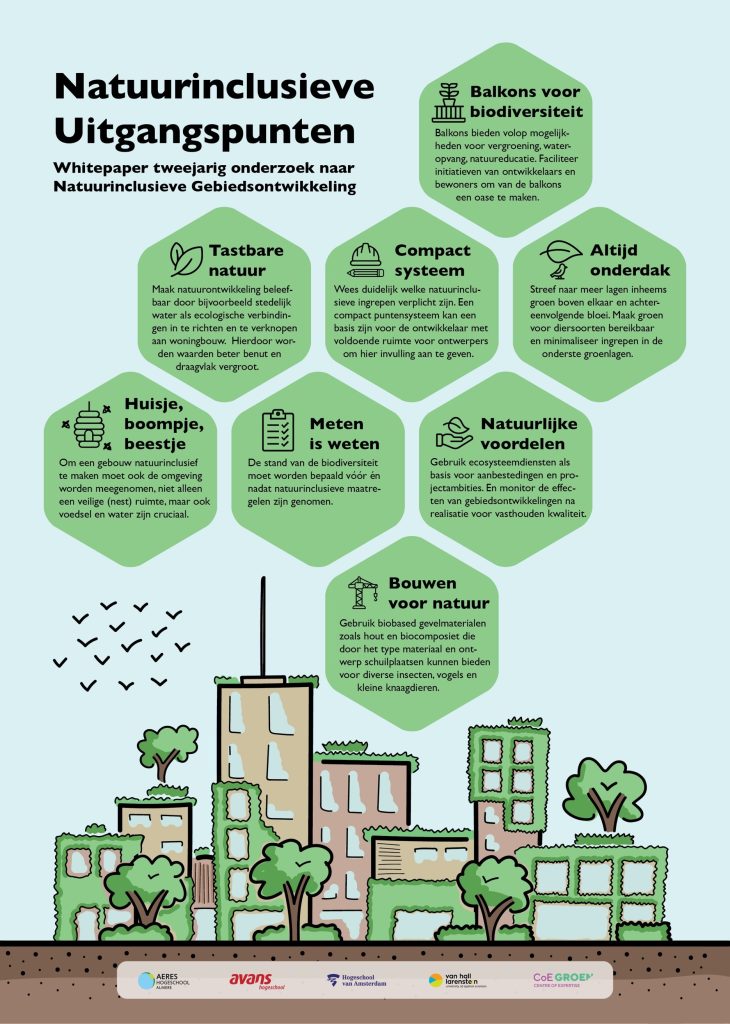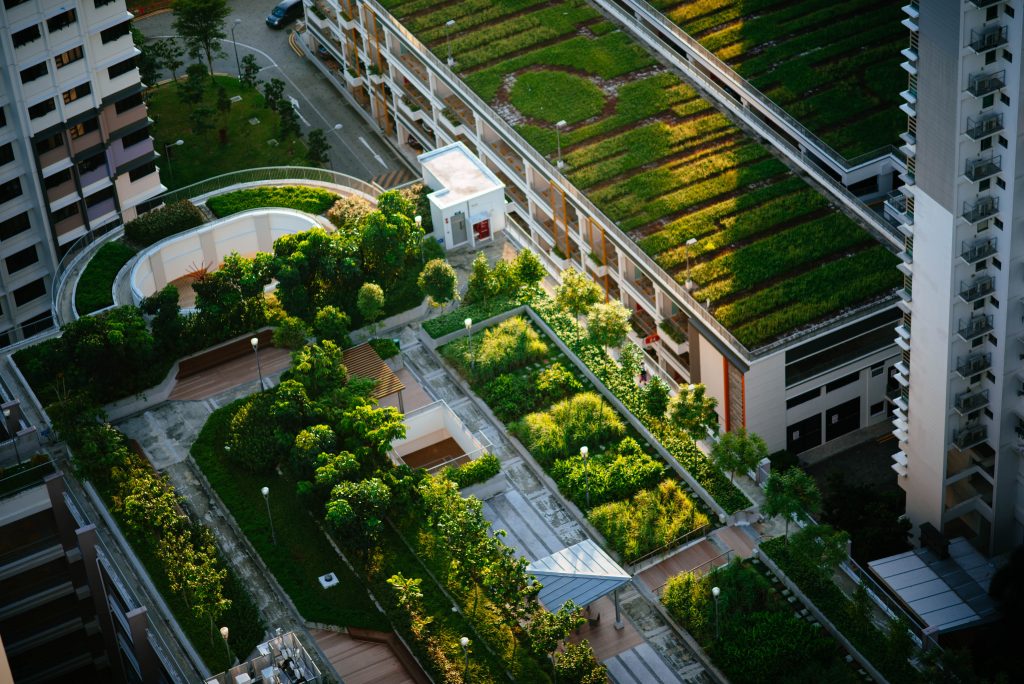Climate change and reducing greenhouse gas emissions are high on the societal agenda. In the Netherlands, only 15% of the original biodiversity remains, scoring below the European average. A major cause of this is urbanization, which is expected to further increase in the coming years. The government aims to build 1 million new homes by 2030, many of which need to be sustainable and located within existing cities.
Nature-inclusive area development crucial for livability
Secretary Gideon Spanjar, Professor of Innovation & Urban Green Spaces at Aeres University of Applied Sciences and senior researcher at the University of Applied Sciences of Amsterdam, states: “The importance of nature-inclusive area development using biobased building materials and naturally greening urban areas is crucial to combat biodiversity loss and climate change and improve the livability of urban areas. Nature-inclusive area development should therefore be applied on a larger scale and more rapidly in the Netherlands. Valuable knowledge has been developed in this project, not only regarding the effects of nature-inclusive construction for users and the underlying ecosystem but also in terms of organization and financing.”
Nature-Inclusive Principles 
The main results of the project have been summarized in a whitepaper titled “Nature-Inclusive Principles.” This whitepaper provides practical principles with which stakeholders can promote nature inclusivity in urban and area development. For the development of these principles, the project partners worked on three scale levels of area development:
- Building (Spoorzone Waarder)
- Street (Knowledge Mile Park – KMP – Amsterdam)
- Area (Almere Center-Pampus)
These scale levels are incorporated into a number of case studies. These case studies highlighted common types of interventions, such as small-scale new construction, improvement of public space, and inner-city housing construction. Although each case had its own thematic focus – biobased materials (Spoorzone Waarder), natural greening (KMP), and governance (Almere) – cross-fertilization took place through sub-studies and collaborations between universities of applied sciences.
The whitepaper can be accessed and downloaded (in Dutch) via this link.
Partnerships
The two-year research project on Nature-Inclusive Area Development was initiated by the Centre of Expertise Groen and is a collaboration between MNEXT (Avans University of Applied Sciences), Aeres University of Applied Sciences, University of Applied Sciences of Amsterdam, and Van Hall Larenstein University of Applied Sciences. The project is funded by the Practical Knowledge for Food and Green (PVG) program of the SIA Executive Agency, part of the Netherlands Organisation for Scientific Research (NWO), and the Ministry of Agriculture, Nature and Food Quality.


